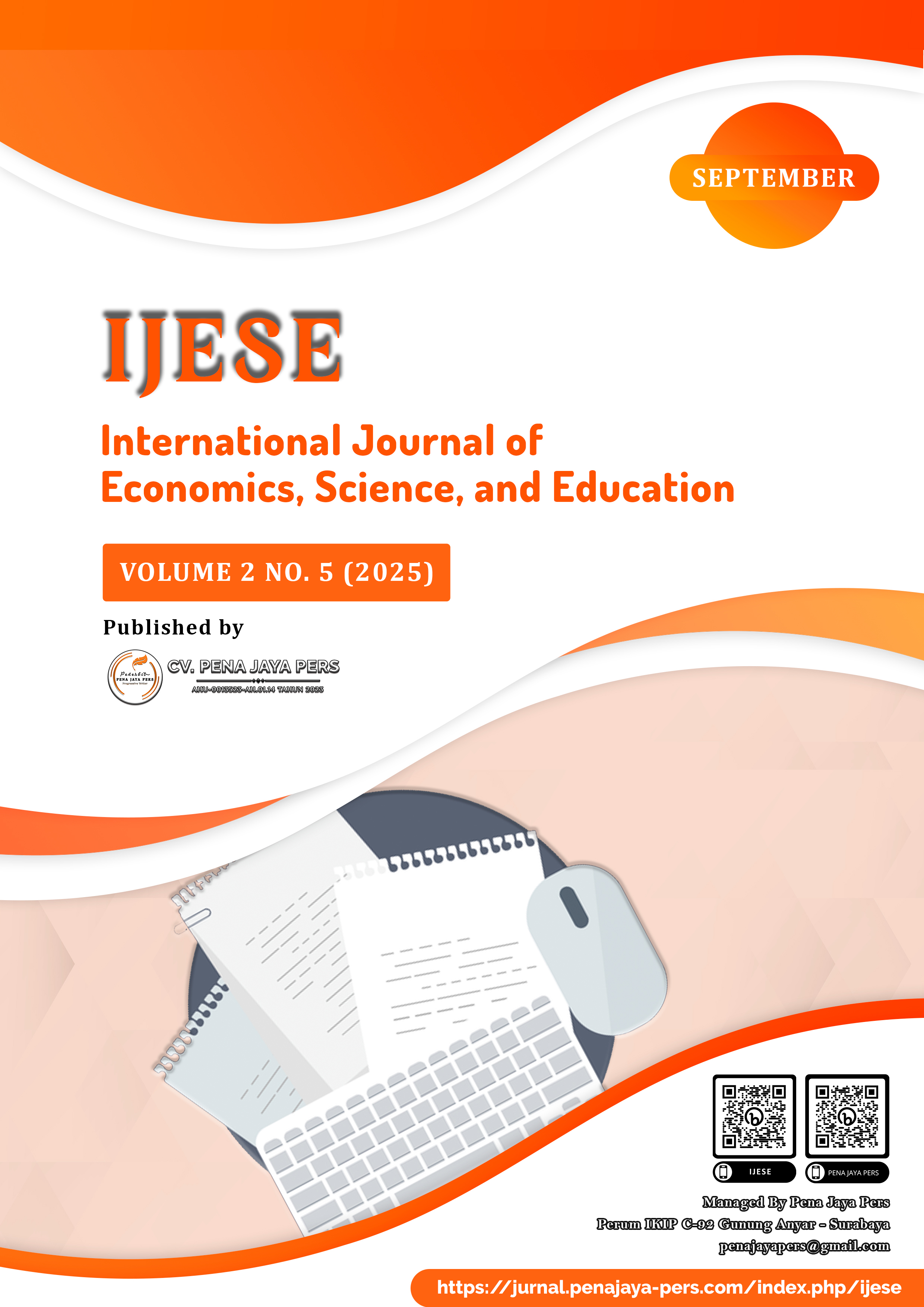Human Resource Management Strategies To Improve Company Performance In The Digital Business Era
Keywords:
human resource management, organizational performance, digital business, HRM strategy, digital transformationAbstract
The advancement of information technology has transformed the global business landscape, compelling companies to adapt to dynamic digital business models. This shift has a direct impact on human resource management (HRM) strategies, which are a key factor in enhancing organizational performance. This study aims to analyze effective HRM strategies for addressing challenges and leveraging opportunities in the digital business era. The research method employed is a systematic literature review of 25 national and international journals published between 2018 and 2024 that discuss HRM practices in digitally based companies. The findings reveal that effective strategies include developing employees’ digital competencies through upskilling and reskilling programs, implementing data-driven HR analytics for decision-making, fostering a technology-based collaborative work culture, and adopting flexible work systems (remote and hybrid). The application of these strategies has been proven to enhance productivity, innovation, and employee satisfaction, ultimately contributing positively to organizational performance. These findings provide practical implications for managers and HR practitioners in designing HRM policies and programs that are adaptive to technological developments and market demands in the digital era.
Downloads
References
Arifin, S., Anisa, N. A., Siswohadi, S., Megasari, A. D., & Darim, A. (2020). The effect of consumption on the society welfare in Sampang district. Quantitative Economics and Management Studies, 1(2), 166–170.
Arifin, S., & Utomo, P. (2022). Analysis of Management Procedures and Recording Process of Cash Funds at PT Pusat Dagang Sentosa. Budapest International Research and Critics Institute (BIRCI-Journal): Humanities and Social Sciences, 5(1), 1166–1171.
Armstrong, M., & Taylor, S. (2020). Armstrongs handbook of human resource management practice (15th ed.). Kogan Page.
Bloom, N., Liang, J., Roberts, J., & Ying, Z. J. (2015). Does working from home work? Evidence from a Chinese experiment. The Quarterly Journal of Economics, 130(1), 165218. https://doi.org/10.1093/qje/qju032
Boudreau, J. W., & Cascio, W. F. (2017). Human capital analytics: Why are we not there? Journal of Organizational Effectiveness: People and Performance, 4(2), 119126. https://doi.org/10.1108/JOEPP-03-2017-0017
Boxall, P., Purcell, J., & Wright, P. (2022). The Oxford handbook of human resource management (2nd ed.). Oxford University Press.
Chaffey, D., & Ellis-Chadwick, F. (2019). Digital marketing: Strategy, implementation and practice (7th ed.). Pearson.
Collings, D. G., Mellahi, K., & Cascio, W. F. (2019). Global talent management and performance in multinational enterprises: A multilevel perspective. Journal of Management, 45(2), 540566. https://doi.org/10.1177/0149206318757018
Deloitte. (2023). 2023 Global human capital trends: Leading in the boundaryless world. Deloitte Insights. https://www2.deloitte.com/insights
Dessler, G. (2020). Human resource management (16th ed.). Pearson.
Frank, A., Dalenogare, L., & Ayala, N. F. (2019). Industry 4.0 technologies: Implementation patterns in manufacturing companies. International Journal of Production Economics, 210, 1526. https://doi.org/10.1016/j.ijpe.2019.01.004
Ghosh, R., & Scott, J. E. (2019). Artificial intelligence in human resource management: Challenges and a path forward. Human Resource Management Review, 29(4), 100688. https://doi.org/10.1016/j.hrmr.2019.100688
Grant, R. M. (2021). Contemporary strategy analysis (11th ed.). Wiley.
Kaplan, R. S., & Norton, D. P. (1996). The balanced scorecard: Translating strategy into action. Harvard Business School Press.
Marler, J. H., & Boudreau, J. W. (2017). An evidence-based review of HR analytics. International Journal of Human Resource Management, 28(1), 326. https://doi.org/10.1080/09585192.2016.1244699
Parry, E., & Battista, V. (2019). The impact of emerging technologies on work: A review of the evidence and implications for the human resource function. International Journal of Human Resource Management, 30(22), 34303457. https://doi.org/10.1080/09585192.2018.1499136
Strohmeier, S. (2020). Digital human resource management: A conceptual clarification. German Journal of Human Resource Management, 34(3), 345365. https://doi.org/10.1177/2397002220921131
Upadhyay, A. K., & Khandelwal, K. (2019). Applying artificial intelligence: Implications for recruitment. Strategic HR Review, 18(4), 176181. https://doi.org/10.1108/SHR-04-2019-0024
World Economic Forum. (2023). The future of jobs report 2023. World Economic Forum. https://www.weforum.org/reports
Wright, P. M., & Ulrich, M. D. (2017). A road well traveled: The past, present, and future journey of strategic human resource management. Annual Review of Organizational Psychology and Organizational Behavior, 4(1), 4565. https://doi.org/10.1146/annurev-orgpsych-032516-113052
Zhou, Y., & Miao, M. (2021). Digital transformation and firm performance: The mediating role of innovation capability. Technology Analysis & Strategic Management, 33(9), 10691082. https://doi.org/10.1080/09537325.2020.1849635
Zlate, S., & Cucui, G. (2015). Motivation and performance in higher education. Procedia - Social and Behavioral Sciences, 180, 468476. https://doi.org/10.1016/j.sbspro.2015.02.146
Bharadwaj, A., El Sawy, O. A., Pavlou, P. A., & Venkatraman, N. (2013). Digital business strategy: Toward a next generation of insights. MIS Quarterly, 37(2), 471482. https://doi.org/10.25300/MISQ/2013/37:2.3
Bondarouk, T., & Brewster, C. (2016). Conceptualising the future of HRM and technology research. International Journal of Human Resource Management, 27(21), 26522671. https://doi.org/10.1080/09585192.2016.1232296
Lepak, D. P., & Snell, S. A. (2002). Examining the human resource architecture: The relationships among human capital, employment, and HR configurations. Journal of Management, 28(4), 517543. https://doi.org/10.1016/S0149-2063(02)00142-3
Minbaeva, D. (2013). Strategic HRM in building micro-foundations of organizational knowledge-based performance. Human Resource Management Review, 23(4), 378390. https://doi.org/10.1016/j.hrmr.2012.10.002
Schiemann, W. A. (2014). From talent management to talent optimization. Journal of World Business, 49(2), 281288. https://doi.org/10.1016/j.jwb.2013.11.012Widawati, E., & Arifin, S. (2021). Equity Crowdfunding As Msme Financing Alternative To Improve Business Competitiveness in the Time of Covid-19 (Case Study in Pak Min Chicken Sop). International Journal of Global Accounting, Management, Education, and Entrepreneurship, 1(2), 155–162.
Downloads
Published
How to Cite
Issue
Section
License
Copyright (c) 2025 Sulastri

This work is licensed under a Creative Commons Attribution-ShareAlike 4.0 International License.













